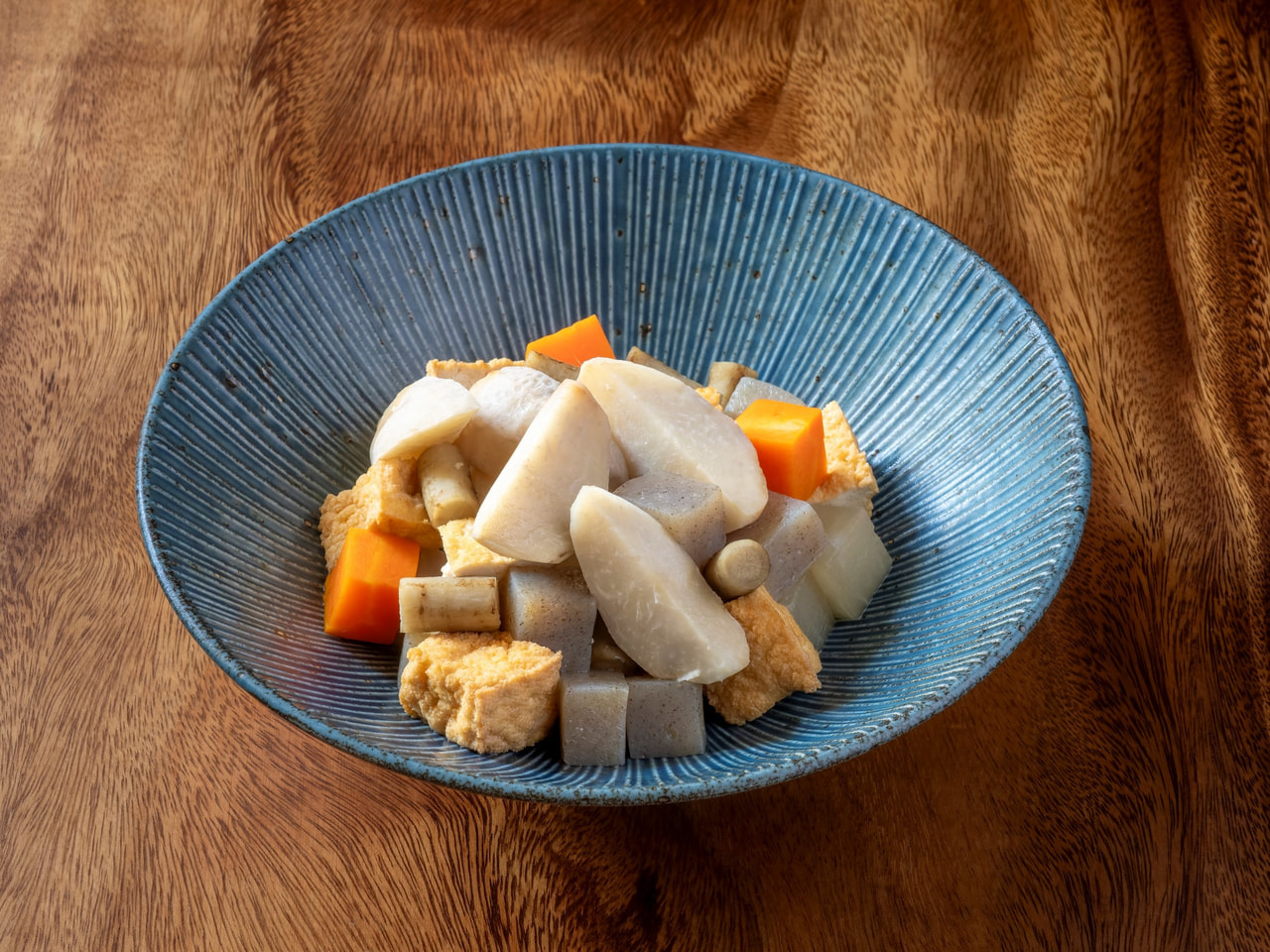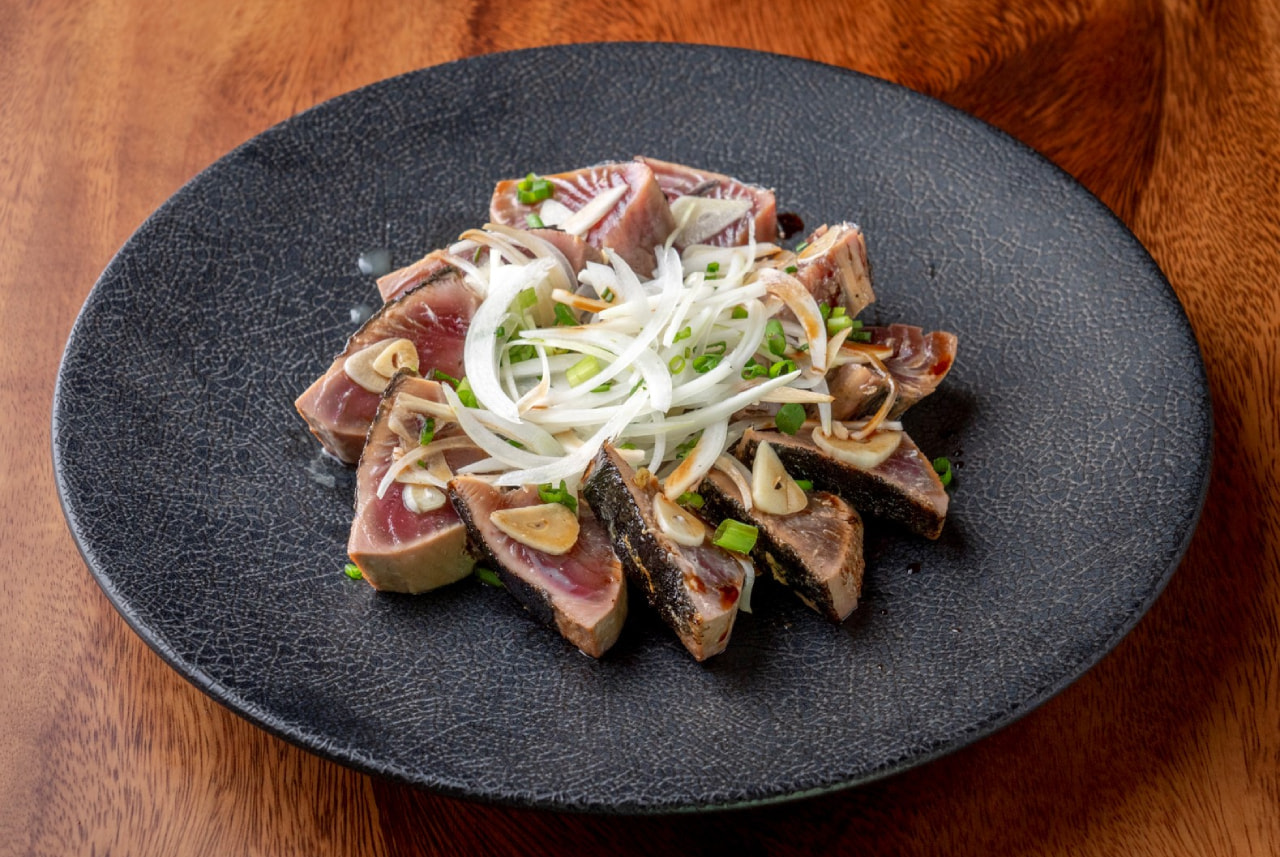Guruni is a simmered dish made with winter root vegetables such as daikon (Japanese white radish), ninjin (carrot), and satoimo (taro), which are easily found in Kochi Prefecture. In earlier times, when food was harder to come by, people would prepare a large batch using whatever vegetables were available and reheat it repeatedly over several days. The word “guru” means “companions” or “everyone” in the Tosa dialect.
Traditionally, the dish was made with six ingredients, inspired by the six characters of the Buddhist chant Namu Amida Butsu (南無阿弥陀仏).
Guruni offers a rich combination of umami from various ingredients.



